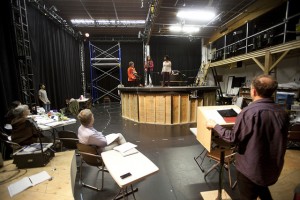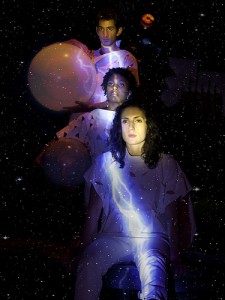Sydney Brownstone’s June 26, 2013 article about The Human Bionic Project for Fast Company touches on human tragedy and the ways in which we attempt to cope by focusing on researcher David Sengeh’s work (Note: Links have been removed),
In the Iraq and Afghanistan wars alone, nearly 1,600 American soldiers have woken up without a limb. Fifteen survivors of the Boston marathon bombings are new amputees. And in Sierra Leone, where MIT graduate student David Sengeh is from, brutal tactics during the country’s 11-year civil war resulted in somewhere between 4,000 and 10,000 amputations in a country of less than 6 million people.
…
Many amputees go through the costly, lengthy process of transitioning to prosthetics, but it’s difficult even for prosthetic research specialists to gather information about the replacement parts outside their narrow fields. That’s part of the reason why, in December of last year, Sengeh and a research team began developing an interactive Inspector Gadget–a repository of all the FDA-approved [US Food and Drug Administration] replacement parts they could find.
…
So far, the Human Bionic Project has between 40 and 50 points of reference on its corporeal map–everything from artificial hearts to bionic jaws. In addition to photos and descriptions, the team will soon be looking to source videos of prosthetics in action from the public. Sengeh also hopes to integrate a timeline, tracking bionic parts throughout history, from the bionic toes of Ancient Egypt to the 3-D printed fingers of modern times.
“In [Haitian and Sierra Leonian] Creole, the word for disabled, like an amputee, is ‘scrap,'” Sengeh said. “I wanted to change that, because I know that we can get full functionality and become able-bodied.”
Do read Brownstone’s article as I haven’t, by any means, excerpted all the interesting bits.
There’s also more at The Human Bionic Project. Here’s a description (or manifesto) from the home page,
The Human Bionic Project begs for the fundamental redefinition of disability, illness, and disease as we have known it throughout history. It dares us to imagine the seamless interaction between the human being and machines. This interactive learning platform enables the user to visualize and learn about the comprehensive advances in human repair and enhancement that can be achieved with current technology. We can also wonder about what the human being will look like by the 22nd Century (year 2100) based on cutting edge advances in science and technology — more specifically in the fields of biomechanics, and electronics.
The Human Bionic Project serves as a call to action for technologists all around the world to think about the design of bionics in a fundamentally new way; how can we engineer all bionic elements for the human body using a similar protocol and architecture? Could we have the behaviour of the bionic knee be in sync with that of the bionic ankle of an above-knee amputee? How can we design a bionic eye that sees beyond what the biological eye can observe and use that information to help humans in critical situations? We have to imagine bionics not as singular units developed to replace or augment human parts but rather as part of a human-bionic system aimed at redefining what it means to be human.
Some of the ideas presented are already products used today, while others are prototypes explored by various research laboratories and inquisitive humans around the world. The works presented here are not ours and are publicly available. We have credited all the authors who are leading these extraordinary research initiatives.
You can find more about prosthetics, etc. on the ‘Inspector Gadget‘ page (it features an outline of a human body highlighted with red dots (click on a red dot to get details about prosthetics and other forms of augmentation). I don’t find this to be an especially friendly or intuitive interface. I think this is an MIT (Massachusetts Institute of Technology) student project and I find MIT tends to favour minimalism on its institutional and student websites. Still, there’s some fascinating information if you care to persist.
Here are more details about the folks and the funding supporting The Human Bionic Project (from the bottom of the home page),
A project by David Moinina Sengeh. Collaborator: Reza Naeeni. Web development: Yannik Messerli. Undergraduate research assistant: Nicholas Fine. Funded by The Other Festival at MIT Media Lab (2013). Follow us on twitter: @humanbionicproj. …
I last mentioned human enhancement/augmentation in my June 17, 2013 commentary on You Are Very Star, a transmedia theatre experience taking place in Vancouver until June 29, 2013. I have written many times on the topic of human enhancement including a May 2, 2013 posting about a bionic ear; a Feb. 15, 2013 posting about a bionic eye; and a Jan. 30, 2013 posting about a BBC documentary on building a bionic man, amongst others.

